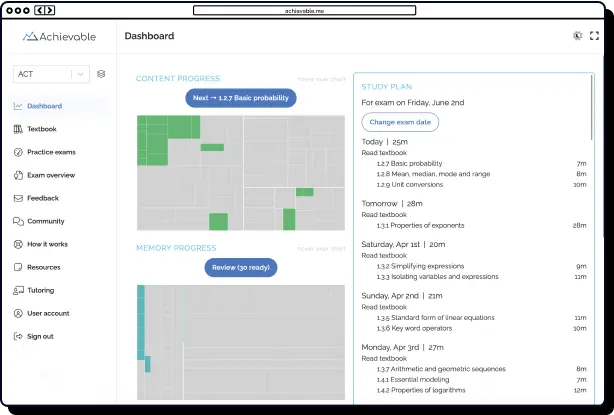
Master reading accuracy with 5 expert test strategies





Charles Bibilos is the founder of GMAT Ninja, an online test prep tutoring service specializing in graduate entrance exams. With more than 20 years of hands-on tutoring experience, Charles has guided students through every phase of graduate admissions, witnessing many changes in testing and admissions trends along the way. In addition to his work as a tutor, Charles' MBA consulting services have helped hundreds of students gain admission to top business and management programs around the globe.
Table of contents
- Why rushing can hurt your GRE performance
- Key takeaways
- The risks of rushed reading
- Building deep comprehension through reflection
- Big-picture reading supports detail accuracy
- Preventing careless mistakes in math
- Solving problems deliberately even under stress
- Purposeful problem-solving beats hasty guesswork
Why rushing can hurt your GRE performance
Key takeaways
- Quick reading costs more than just points: it stops you from showing your true skill, especially on adaptive exams where each question matters.
- True understanding develops when you read carefully and reflect; skimming falls short.
- Grasping the overall structure of a passage helps you make sense of the details: it’s not a choice between the two.
- Double-checking your work in math sections leads to greater accuracy and reliability.
- Slowing down under stress can feel uncomfortable, but research confirms it brings better outcomes and greater confidence.
Getting a top GRE score is a shared goal for many aspiring graduate students. While mastering vocabulary and logic is important, managing your time often proves to be the real challenge. The pressure of a ticking clock causes even well-prepared students to slip, not necessarily because of knowledge gaps but because they rush. This leads to an important question: how can you pace yourself to avoid careless mistakes and perform at your best?
Let’s look at the obstacles the GRE presents, how common habits cause errors, and practical strategies to make the most of your test time. Just a few strategic adjustments can change not only your scores but also your confidence on test day.
The risks of rushed reading
When the clock is ticking, it’s tempting to speed through reading passages to save time for the questions. In reality, this habit usually backfires, especially on adaptive exams like the GRE and GMAT. These tests increase question difficulty after correct responses and lower it after mistakes, so careless reading can have larger consequences than you might expect.
Studies show that trying to read too quickly leads to weaker comprehension and retention. Racing through material makes it easy to miss subtle details or lose track of the author’s argument. On adaptive exams, one misunderstanding can quickly snowball: misreads may lead to tougher questions or misrepresent your true ability.
Standardized test data supports this: students who rush through reading passages score lower than others. Most mistakes are surface-level: they pick answers that sound plausible but miss key meaning because they didn’t process the passage fully.
The effects go beyond just lower scores. Hurrying undermines real engagement with the text. When you read too quickly, you’re more likely to overlook essential evidence or misconstrue the author’s purpose, making it easier to fall for trap answers even if you’re familiar with the content.
To combat this, practice reading with intention and depth. Decide on a minimum amount of time to spend with each passage. Annotate (highlight key points or write brief notes) to stay engaged. By practicing under realistic time constraints, you’ll develop a natural sense of pacing that balances careful reading with staying on schedule.
Most importantly, keep in mind: adaptive exams reward thoughtful, attentive work. Mindful reading is not optional: a requirement for your best results.
Building deep comprehension through reflection
An effective way to boost your understanding of dense material is to pause at the end of each paragraph and quickly summarize it in your own words. This technique might seem like an extra task, but research demonstrates that this strategy boosts your ability to infer and recall details.
Pausing to reflect is more than just stopping for a moment. It allows you to check your understanding, relate new information to what you already know, and catch confusion early. For readings filled with complex arguments or unfamiliar terms, making a brief note of each paragraph’s main idea helps clarify the structure of the text.
In practice, underline topic sentences or leave quick margin notes. Digital tools make it easy to highlight and comment at key moments. These simple actions reveal how the author’s points connect and make information easier to remember for questions that follow.
Regularly reflecting also helps you catch your own biases or correct mistaken first impressions, minimizing the chance of missing crucial details or falling for tricky answer traps.
Adopting this habit helps you manage more information with greater ease, leading to clearer thinking and stronger performance, even when you’re short on time. A few extra moments spent reflecting pays off in deeper comprehension and better scores.
Big-picture reading supports detail accuracy
It’s easy to focus immediately on the details when facing a difficult GRE passage. However, both research and real-world results suggest that starting with a big-picture approach is more effective.
Begin by asking yourself what the passage’s main argument is and how each paragraph contributes to that purpose. Identifying the structure first helps you spot supporting evidence quickly and feel more confident answering the specifics.
This technique gives you a clear overview of the argument. For example, if you know where the writer introduces a claim or adds an example, you’ll find it much easier to refer back when needed. This reduces doubt and helps you avoid selecting answer choices that only seem correct.
Annotations are especially useful here. Marking where the author shifts focus or structure makes it easier to navigate under time pressure.
Keep in mind, seeing the big picture doesn’t mean skipping the details. Instead, it enables you to pinpoint, understand, and recall them with less effort and fewer errors. As passages become longer or more complex, this approach becomes increasingly vital.
Preventing careless mistakes in math
Simple math errors often aren’t a sign of weak skills; they typically happen because you’re rushing or skipping steps. Even strong math students might forget a negative sign or misapply a formula when they’re not paying full attention. On the GRE, these little mistakes can add up.
The main culprit is working on “autopilot,” or doing calculations without really tracking your steps. Since math problems often build one step on the next, a single error can throw off your entire solution.
You can reduce these mistakes by using micro-checks: pause at each step to double-check your math and reasoning. For example, once you finish part of a problem, confirm your units, signs, and whether your answer is reasonable. Research confirms that step-by-step checking does more than improve accuracy, it also builds your confidence.
While digital tools like spreadsheets can assist with organization during your prep, nothing replaces attentive review. Make it a habit to reread the problem statement both before and during your work, not just at the end. This helps you catch slips early, before they compound, and build usable strategies for the exam.
Ultimately, precision in math comes from reliable habits. Consistently double-checking your process will boost both your score and your preparation for future quantitative challenges.
Solving problems deliberately even under stress
High stakes and tight time limits can make you want to rush through questions. Yet this tendency often causes “cognitive tunnel vision:” a narrow focus that makes you overlook information or make mistakes you could have avoided.
Research shows that students who take brief, intentional pauses before responding, especially under pressure, consistently get more questions right than those who hurry. Professionals in high-pressure fields, such as doctors and pilots, rely on similar techniques like short checklists or structured pauses to stay focused and prevent errors.
On test day, you can use this by building small pause routines into your workflow. Before you tackle a question, take a moment to review the instructions and choose the best approach. After finding an answer, verify that it matches all parts of the problem and that you didn’t overlook anything important.
This method, known as metacognition, does more than catch errors; it helps you manage stress. When you feel rushed or anxious, a brief pause lets you reset and regain your focus before moving ahead.
Practicing these strategies ahead of the exam helps them become automatic, so you can rely on them under pressure. While you might still feel rushed at times, you can train yourself to respond thoughtfully rather than react impulsively.
Purposeful problem-solving beats hasty guesswork
Evidence shows that rushing through reading and problem-solving leads to more mistakes, especially on adaptive exams. Skimming or guessing quickly increases your risk of missing key points on questions where accuracy is critical. In contrast, those who pause to check understanding, confirm calculations, and intentionally select strategies consistently achieve higher and more reliable scores.
For both students and educators, this demonstrates that reflection, detailed checking, and big-picture analysis matter more than just working faster. These practices don’t only raise scores, they also lay the groundwork for careful thinking under pressure, in exams and in future challenges. Focus on quality as well as speed, and you’ll be ready for the unique demands of adaptive, high-stakes assessments and everything that follows.

